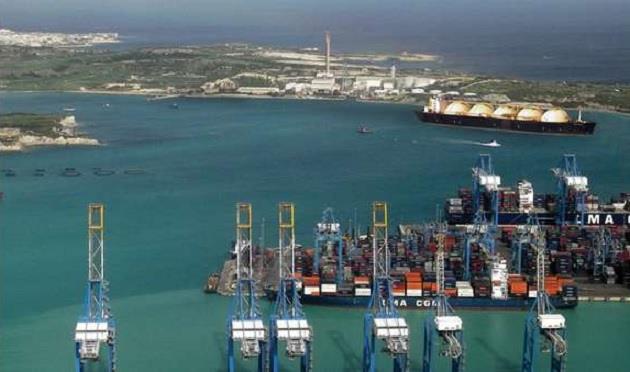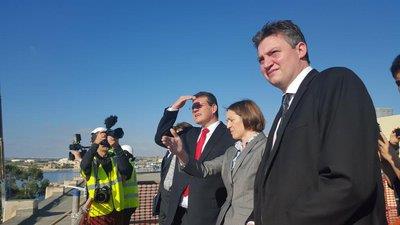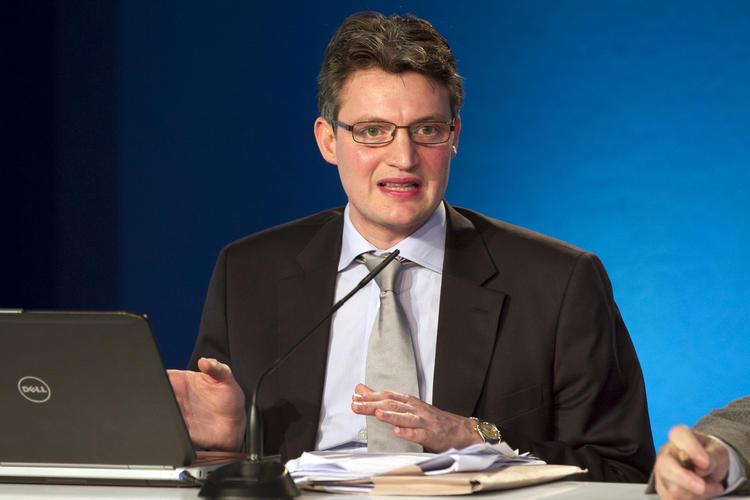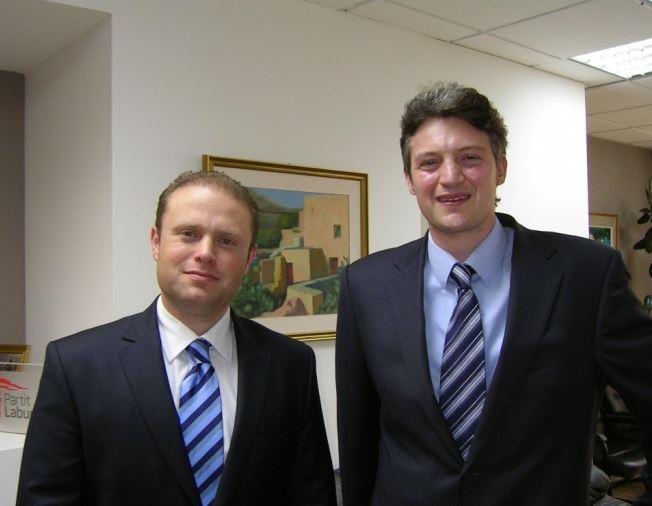The land-based storage of LNG to fuel the new Delimara power station would have cost anywhere between US$500 million and US$1 billion, according to 2012 documentation published by the former power station project’s lead developer Gasol.
The documentation also shows that the land-based storage option the Labour Party had sold to the electorate would have taken four to five years to construct.
The whopping price tag throws then aspiring energy minister Konrad Mizzi’s pre-election “costings” for the totals of €376 million out the window, while the timings involved show that the two-year promised timeframe was clearly unachievable with the land-based storage that the Labour Party had sold the electorate before the 2013 general election.

These two facts clearly demonstrate what was well-known to the Labour Party at the time: that the highly controversial floating storage and regasification unit (FSRU) that will be permanently berthed in Marsaxlokk Bay was the only viable solution from the outset, but that the highly controversial solution had been kept hidden from the electorate.
This disingenuous state of affairs is further evidenced by documentation published exclusively by this newspaper last week that in 2009, when Gasol had brought a near-identical power station proposal to the then Nationalist Party in government it had only suggested an FSRU and had never mentioned the far-costlier and time-consuming land-based storage option.
But despite that, it was the land-based option that the Labour Party had pitched to the electorate – a proposal that had been heavily criticised by the then PN government of the time because of its prospective cost as well as the sheer size of such an installation. The PN at the time had posited that such an installation would equal the size of two Mosta domes.

The same documentation published by Gasol puts a price tag of between US$50 million and US$250 million on the FSRU, which fits Dr Mizzi’s late 2012-early 2013 “costings” like a glove.
Additionally, Gasol’s timings for the implementation of a land-based storage operation also throw the Labour’s Party’s two-year timing for the project completely out of whack.
In fact, the same documentation published by Gasol stipulates that the construction period for a “traditional onshore LNG receiving terminal” as that pitched to the electorate would run anywhere between 48 and 60 months (four to five years), while the construction period for an FSRU runs between 12 and 24 months (one to two years), which is also a perfect match with Dr Mizzi’s timings.
The Gasol documentation, which was removed from its website and was purged soon after the company sold its shares in the Electrogas consortium, delisted from the London Stock Exchange and dropped out of the Malta project it had been seeking to enter since 2009, backs up the Nationalist Party’s allegation that the competitive process leading to the Electrogas consortium winning the Delimara power station project had been a sham from the outset.

Investment cost accurately predicted by Labour before the election
Soon after the Gasol-led consortium was declared the project’s preferred bidder by Konrad Mizzi at a press conference on 13 October 2013, Gasol released a public statement, dated 14 October 2013, on its website – which for some unknown reason it retracted within a few days – describing the Malta project win. In its statement, Gasol stated that the project cost’s was estimated at €370 million.
A rather accurate prediction of this cost had been made by the Labour Party in its energy plan announcement on 8 January 2013. During a press conference given at the time, Dr Mizzi had mentioned the total anticipated investment cost of €376 million. He even broke that figure down into the main infrastructural components, namely €166 million for the power station, €68 million for the conversion of the BWSC plant, and €142 million for the gas infrastructure, including the storage and regasification.

Cost of onshore gas storage versus LNG tanker
Before the election, Labour had predicted that its energy plan would reduce the generation cost per unit of electricity (one kilowatt-hour) to Enemalta to 9c6 from around 18 cents at the time. The unit cost depends on the cost structure of the underlying investment, operations (especially the fuel cost), maintenance, management, and so on.
In its pre-election project outline, Labour had indicated two on-shore LNG storage tanks adjacent to the power station. The cost of the storage and regasification plant was estimated by the party at €142 million. This configuration received heavy criticism from the PN at the time, as it appeared that the cost and time-frame of the construction of two on-shore tanks had been grossly underestimated. The criticism also included the argument that land stabilisation costs had not been factored into the costings.
Gasol’s own literature about its LNG-to-power solutions from the time confirms that the PN’s position had not been far off the mark.
In its glossy annual report for the year ended March 2012, Gasol included a comparison of initial investment cost of its LNG-to-power solution, which uses an LNG floating vessel versus the use of conventional on-shore tanks.
According to Gasol’s own estimates, which appear to have been pitched to the Labour Party before the election, the development of onshore tanks requires a budget in the range of US$500 million to US$1 billion, whereas a similar sized floating storage unit US$50 million to US$250 million In euros, at today’s rates of exchange, the cost of an LNG tanker was in the range of €45 million to €220 million (rounded to nearest €5 million), and the cost of on-shore tanks was in the range of €440 million to €875 million.

In other words, the cheapest on-shore tank would cost at least twice as the most expensive LNG tanker.
But most astonishingly, based on Gasol’s own figures, the cost of the smallest on-shore tank, estimated at around €440 million, would have, by itself, exceeded the cost of the entire project proposed by the Labour Party, with new power station, BWSC conversion and gas infrastructure all included.
In fact, Labour’s pre-election estimate of €142 million for the gas infrastructure alone fits comfortably within the range given by Gasol for an LNG tanker.
The huge difference in the cost structure of gas storage would have a correspondingly huge impact on the generation cost per unit of electricity. In fact, using some quick math, Labour’s project would have cost around €674 million [€166 million + €68 million + €440 million] if on-shore tank storage at the lowest end of the range was used. This cost estimate would be around twice the cost predicted by Labour.
Gasol’s annual report for 2012 is no longer available on the company’s website, but this newspaper retains a copy. Similarly descriptive material was also available directly on Gasol’s website, but that has also since been removed.

Gasol’s material also confirms project delivery time-frame discrepancies
The same annual report of 2012 shows a comparison of time-frames for the construction of onshore tanks versus the delivery of an LNG tanker. Gasol gave the construction period for an LNG FSRU from one to two years, whereas the construction of an on-shore tank was given within a range of four to five years.
Labour had staunchly pledged a two-year time frame from the elections for its plan. Although the Electrogas project is based on the contentious use of an LNG tanker, more than three years have now passed since the election and the project is not yet complete and the tanker is nowhere to be seen.
This newspaper can also reveal a number of other unexplained coincidences between the Electrogas proposal and pre-election material.
Unlike the final deal with Electrogas, the 2009 proposal to the PN, as published exclusively by this newspaper last Sunday, promised full financing by the private consortium and indicated a total implementation time frame of four years.
The main features of that proposal, which are shared with the Electrogas project, comprise the involvement of Gasol and Paul Apap Bologna, the use of the name GEM (Greener Energy for Malta), the use of an LNG tanker (FSRU) in Marsaxlokk Bay for gas storage, the government’s guarantee on output through a 20-year power purchase agreement (Electrogas signed an 18-year contract) and the proposed reduction in wholesale prices by 30-40 per cent (of which Enemalta passes 25 per cent to consumers).
Opposition Leader Simon Busuttil termed the Electrogas deal as a sham from the outset, and this week he wrote to the Auditor General to investigate whether the terms of the public bid had been dictated by the Gasol-GEM proposal that his own party had also pitched back in 2009.
Also see: http://www.independent.com.mt/articles/2016-04-24/local-news/Identical-power-station-project-pitched-to-PN-in-2009-LNG-tanker-and-all-6736156794